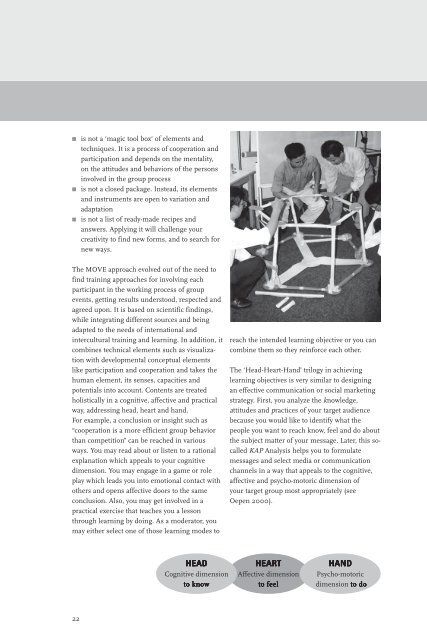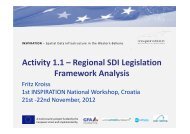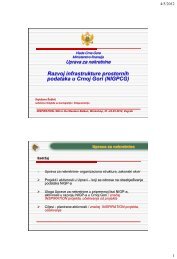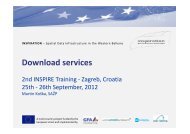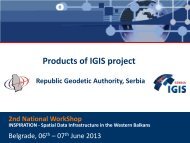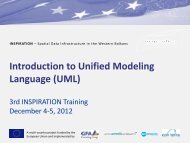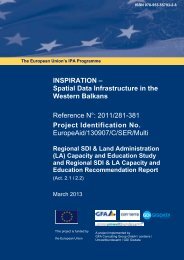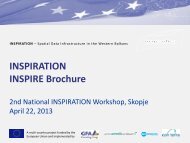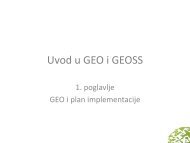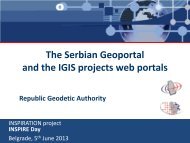MOVE - Moderation and Visualization for Group ... - INSPIRATION
MOVE - Moderation and Visualization for Group ... - INSPIRATION
MOVE - Moderation and Visualization for Group ... - INSPIRATION
You also want an ePaper? Increase the reach of your titles
YUMPU automatically turns print PDFs into web optimized ePapers that Google loves.
■ is not a ‘magic tool box‘ of elements <strong>and</strong><br />
techniques. It is a process of cooperation <strong>and</strong><br />
participation <strong>and</strong> depends on the mentality,<br />
on the attitudes <strong>and</strong> behaviors of the persons<br />
involved in the group process<br />
■ is not a closed package. Instead, its elements<br />
<strong>and</strong> instruments are open to variation <strong>and</strong><br />
adaptation<br />
■ is not a list of ready-made recipes <strong>and</strong><br />
answers. Applying it will challenge your<br />
creativity to find new <strong>for</strong>ms, <strong>and</strong> to search <strong>for</strong><br />
new ways.<br />
The <strong>MOVE</strong> approach evolved out of the need to<br />
find training approaches <strong>for</strong> involving each<br />
participant in the working process of group<br />
events, getting results understood, respected <strong>and</strong><br />
agreed upon. It is based on scientific findings,<br />
while integrating different sources <strong>and</strong> being<br />
adapted to the needs of international <strong>and</strong><br />
intercultural training <strong>and</strong> learning. In addition, it<br />
combines technical elements such as visualization<br />
with developmental conceptual elements<br />
like participation <strong>and</strong> cooperation <strong>and</strong> takes the<br />
human element, its senses, capacities <strong>and</strong><br />
potentials into account. Contents are treated<br />
holistically in a cognitive, affective <strong>and</strong> practical<br />
way, addressing head, heart <strong>and</strong> h<strong>and</strong>.<br />
For example, a conclusion or insight such as<br />
“cooperation is a more efficient group behavior<br />
than competition” can be reached in various<br />
ways. You may read about or listen to a rational<br />
explanation which appeals to your cognitive<br />
dimension. You may engage in a game or role<br />
play which leads you into emotional contact with<br />
others <strong>and</strong> opens affective doors to the same<br />
conclusion. Also, you may get involved in a<br />
practical exercise that teaches you a lesson<br />
through learning by doing. As a moderator, you<br />
may either select one of those learning modes to<br />
22<br />
HEAD<br />
HEAD<br />
Cognitive dimension<br />
to to know<br />
know<br />
reach the intended learning objective or you can<br />
combine them so they rein<strong>for</strong>ce each other.<br />
The ‘Head-Heart-H<strong>and</strong>’ trilogy in achieving<br />
learning objectives is very similar to designing<br />
an effective communication or social marketing<br />
strategy. First, you analyze the knowledge,<br />
attitudes <strong>and</strong> practices of your target audience<br />
because you would like to identify what the<br />
people you want to reach know, feel <strong>and</strong> do about<br />
the subject matter of your message. Later, this socalled<br />
KAP Analysis helps you to <strong>for</strong>mulate<br />
messages <strong>and</strong> select media or communication<br />
channels in a way that appeals to the cognitive,<br />
affective <strong>and</strong> psycho-motoric dimension of<br />
your target group most appropriately (see<br />
Oepen 2000).<br />
HEART<br />
HEART<br />
Affective dimension<br />
to to feel<br />
feel<br />
HAND<br />
HAND<br />
Psycho-motoric<br />
dimension to to do<br />
do


